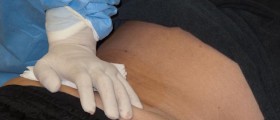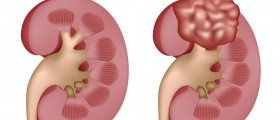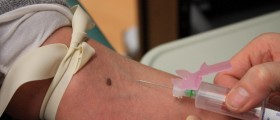
Osteosarcoma
Osteosarcoma most frequently affects children and young adults. The children under the age of 15 are predominantly affected by this tumor. This can be explained by rapid growth and development of bones in this particular period of their lives. Boys are more affected by osteosarcoma than girls. If the diagnosis of the tumor is not set on time the tumor may spread to surrounding tissues and finally give metastases into distant organs, most commonly lungs or other bones.
Causes of Osteosarcoma
The scientists have not found the exact cause of osteosarcoma. Still some believe that over activity of bone tissue can be a trigger of tumor. This over activity is commonly caused by an error in bone cell DNA. The error leads to formation of immature bone cells which tend to multiply rapidly. The rapid multiplication cannot be stopped.
Exposure to radiation is a possible cause of osteosarcoma. Namely, children who have undergone radiation therapy due to some other primary tumor are more prone to osteosarcoma. Furthermore, osteosarcoma has been reported to run in some families.
Symptoms of Osteosarcoma
The bones which are predominantly affected by the tumor are shinbone, humerus and femur. The leading symptoms include pain and swelling of the bone. Still in some patients the symptoms can vary according to the location of the very tumor.
Patients may additionally complain about tenderness of the affected area. Stiffness of joints can be reported as well. In large tumors even fractures may occur. And, sometimes patients complain about increased body temperature, tiredness and weight loss. Blood test can show anemia.
Diagnosis and Treatment for Osteosarcoma
After patients have described all the symptoms of the disease the doctor performs physical examination. He/she will palpate the painful leg and then conduct blood tests. Patient will undergo x ray of the affected limb. Still the better insight of the tumor and its connections with the surrounding tissues can be achieved by MRI of the affected extremity. The MRI is also indicated prior the operation. Pathohistological examination of the samples taken by biopsy can confirm or rule out osteosarcoma.
The treatment basically depends whether the tumor has spread to distant organs or not. If it has not spread a patients is operated and then he/ she undergoes chemotherapy. In advanced stages of the disease the patient are only given chemotherapeutics. Radiation therapy is not typically applied in patients suffering from osteosarcoma. However, it may sometimes be effective.

















Your thoughts on this
Loading...